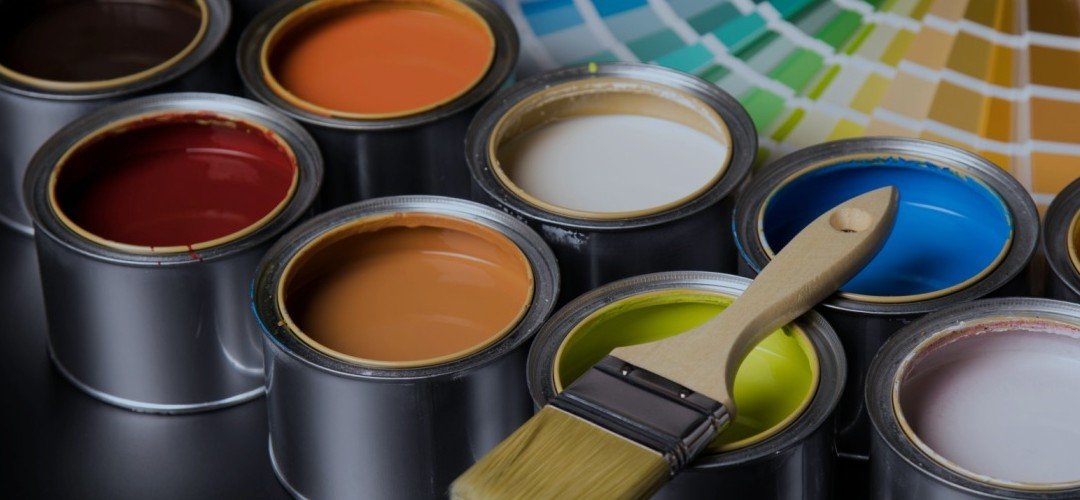Why do water-based paints last long?
Posted on: 2024-12-11

When it comes to painting our homes, the choice of paint can significantly impact not only the appearance but also the longevity of the finish. Among the various options available, water-based paints have emerged as a popular choice for homeowners and professionals alike. But what is it about water-based paints that makes them last longer on walls? In this blog, we will explore the key features and benefits that contribute to the durability of water-based paints, ensuring your walls remain vibrant and intact for years to come. Water-based paints are formulated with water as the primary solvent, which means they contain pigments, binders, and additives suspended in a water solution. This formulation provides several advantages over traditional oil-based paints, making them a preferred choice for both interior and exterior applications.
The Role of Good Composition Matters
The durability of water-based paints can be attributed to their unique composition. Unlike oil-based paints that rely on organic solvents, water-based paints use acrylic or latex binders. These binders provide excellent adhesion to surfaces, ensuring that the paint adheres well and remains intact even under challenging conditions. The flexibility of these binders allows the paint to expand and contract with temperature fluctuations, reducing the risk of wall cracking or chipping.
Key Benefits of Water-Based Paints
Resistance to Cracking and Chipping One of the standout features of water-based paints is their resistance to wall cracking and chipping. As mentioned earlier, the flexible nature of acrylic or latex binders allows the paint to adapt to changes in temperature and humidity. This flexibility is crucial for maintaining a smooth finish over time, especially in environments where walls may expand or contract. 2. UV Resistance Water-based paints are formulated to be more resistant to ultraviolet (UV) rays, which means they can retain their color and sheen longer when exposed to sunlight. This is particularly beneficial for exterior applications where fading can occur due to prolonged sun exposure. By choosing water-based paints, homeowners can enjoy vibrant colors that stand the test of time. 3. Low Volatile Organic Compounds (VOCs) Another significant advantage of water-based paints is their low levels of volatile organic compounds (VOCs). VOCs are harmful chemicals that can evaporate into the air and contribute to air pollution and health issues. They typically contain fewer VOCs compared to oil-based alternatives, making them a safer choice for indoor environments. This not only benefits your health but also contributes to a more sustainable painting solution. 4. Quick Drying Time These paints dry significantly faster than oil-based paints, often within a few hours. This quick drying time allows for faster project completion and reduces the risk of dust or debris settling on wet paint. Additionally, because they dry quickly, homeowners can apply multiple coats in a shorter period, enhancing the overall durability of the finish. 5. Easy Cleanup Cleaning up after a painting project can be a hassle, but with water-based paints, it's as simple as using soap and water. This ease of cleanup not only saves time but also minimizes environmental impact since there’s no need for harsh solvents or chemicals commonly required for oil-based paint cleanup.
Application Techniques That Enhance Longevity
To ensure that water-based paints last long on walls, proper application techniques are essential: Surface Preparation: Preparing the surface by cleaning and sanding it helps create a strong bond between the paint and the wall. Priming: Using a suitable primer can enhance adhesion and improve coverage, especially on previously painted surfaces. Multiple Coats: Applying multiple thin coats rather than one thick coat helps achieve a more durable finish. Quality Tools: Investing in high-quality brushes or rollers ensures even application and reduces streaks or marks.
Wrapping up
In conclusion, water-based paints offer numerous advantages that contribute to their longevity on walls. From their flexible binders that resist cracking and chipping to their UV resistance that maintains color vibrancy, these paints are designed for durability. Additionally, their low VOC content makes them an environmentally friendly option that prioritizes health without compromising performance. Choosing water-based paints means investing in a solution that not only beautifies your space but also stands up to the test of time. With proper application techniques and quality products, homeowners can enjoy walls that look fresh and vibrant for years to come. So next time you consider painting your home, remember that water-based paints are not just an aesthetic choice—they are a smart investment in durability and sustainability!
